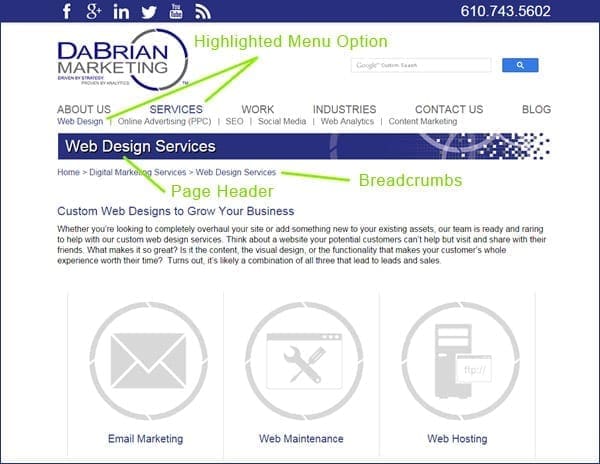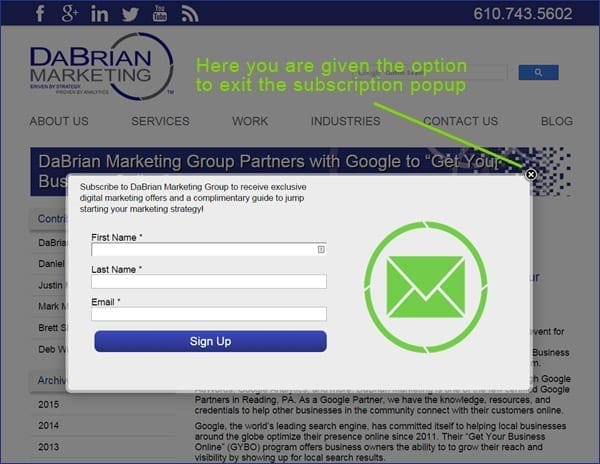As an ad agency owner, I speak to a number of prospective clients throughout the year. It’s very common for people to have misconceptions about the advertising business but in some cases, these issues are common myths. With that said, below are my replies to common myths to help understand our industry, services, and agreements:
Website Hosting is all the same!
WordPress is one of the most popular Content Management Systems (CMS) and powers an estimated 24% of the internet. Contrary to popular belief, it’s important that you update most CMS’s for security purposes and that includes the themes and plugins. Only 36% of all WordPress websites are the most up-to-date version and that doesn’t include the plugins which means that the website is a security risk.
My Website Works for me!
Define “work”? According to Webster, work is: activity in which one exerts strength or faculties to do or perform something. What function is your website performing for your business and do you have the metrics to prove it? Is it an online brochure or does it generate visits, collect form information, or drive sales? If not, can you truly say that it’s working?
Paid Search doesn’t work for my business or my industry but You ran it!
Let’s be honest, it didn’t work because you’re not a marketing professional, you don’t have the time, don’t know the AdWords or Bing Ads platform, you can’t code/program landing pages for your campaigns, and that’s just for starters. The AdWords and Bing Ads platforms are tools for your business, so learn how to use them or get a certified AdWords or Bing accredited professional to handle it for you!
I’m B2B, Don’t Need SEO or Digital Marketing, and My Prospects know me!
According to Google, 89% of B2B researchers use the internet during the B2B research process. So, you are missing an opportunity to differentiate your products or services from the competition. Purchasing a product or service is a human behavior, and those decision-makers are doing the research and are also the ones signing-off on agreements or purchases. When was the last time you saw just the company’s name on the dotted line or the signature on the check?
Every agency is certified for Paid Search, Really!
Depending on the source, there are an estimated 32,000 up to 55,000 advertising agencies in the United States. There are a few thousand certified AdWords Professionals but only a few hundred Google Partners within the United States. Each of the Google Partners have unique budget limits for new clients and individual industry expertise. So, not all agencies are certified for paid search and I would estimate that only 25% are Google Partners.
Don’t Need Social Media!
80% of small businesses use social media websites for monitoring and collecting information about competitors to their businesses (Source: Socialmediatoday). In addition, existing customers are discussing your products or services which leads to research, purchases, and product/service reviews. Many businesses are using social media as part of their customer service as well. I guess there is no need to collect information on the competition, promote your products or services, or listen to customers.
I use social media but I don’t need a content strategy
What’s the plan and how do you know if your posts are useful for your fans, followers, friends or connections? You’re talking but is anyone listening? Even worse, you’re the diva on social media that only talks about themselves, doesn’t share others social posts, or interact with others! Let’s identify your target audience and share information that’s useful to them. You might even be considered an expert and start discussions about your products, services or industry.
We’re using Email Marketing
So, you have a Constant Contact account but you’ve got no email marketing plan, no metrics to gauge success, limited integrations with your customers database, no automated follow-ups, and everyone gets the same generic email. Constant Contact encourages contact management, list segmentation, and other features. If you’re going to use email marketing, maximize your time and leverage the email platform to it’s full capacity to generate leads, sales and save you time.
The Ad Agency didn’t do their job
You paid for a website redesign project with hosting but making changes to the website, content, or security updates are not in the agreement. Now, you’re upset because you don’t know how to make changes and the website hasn’t been updated in months. Also remember that you updated the website for a strategic reasons so what metrics did you want to improve and were these metrics improved? Review the agreement and understand what it is that you are paying for. In many cases, there is a specific reason for the estimate from ad agency to ad agency and the devil is in the details.




